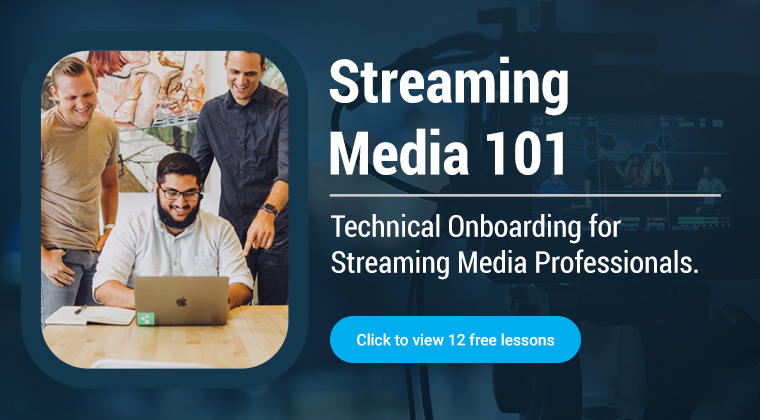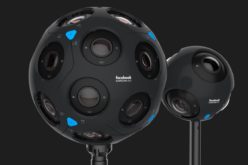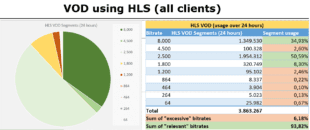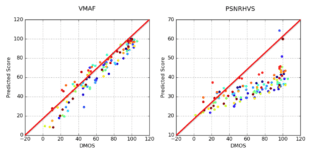While at NAB, I produced a short video with Beamr CTO Dror Gil and Dirk Griffioen from Unified Streaming, which sells a variety of streaming-related software, including modules for ABR packaging. The primary topic was encoding and packaging with HEVC in HLS. Dror also gave a brief demo of Beamr’s new Transcoder product. During the talk, we covered sub-topics like the suggested encoding …
Read More »NAB Roundup: What I Learned About the Launch of AV1
From a Streaming Media perspective, NAB 2018 was all about the launch of the AV1 codec from the Alliance for Open Media. While at the show, I spoke with many different people from many different companies about the launch, and about other codec-related announcements at the show. You can read all about that in my article entitled, NAB Roundup: The …
Read More »Facebook Introduces New 360°/VR Video Quality Metric
VR and 360° video has all of the compression-related issues of flat video, and then some. Facebook’s new metrics, called SSIM360 and 360QVM, might simplify quality analysis for developers in the future, particularly if Facebook open sources the metrics. In a blog post called “Quality Assessment of 360° Video View Sessions,” Facebook will announce two objective quality metrics—SSIM360 and 360QVM—that the company …
Read More »ZPEG Engine for x264 Cuts Video Data Rate by 21% Without Artifacts
With streaming video data rates, less is always more, unless of course, lower data rates mean visible artifacts. I just finished a review of the ZPEG Engine for x264, which produced bitrate savings of 21% without blocks, banding, mosquitoes, or other problems that would be noticeable by typical viewers. This was an average saving; the data rate reduction in some …
Read More »Beamr to Launch Cloud Transcoder: Video Interview with CTO Dror Gill
We’ve known Beamr as an optimization company, and in 2016 they bought Vanguard Video, a codec company. Traditionally, Beamr sold SDKs to large customers, but now they’re launching a cloud transcoding service. I recently interviewed CTO Dror Gill about the new service; here’s the video.
Read More »AV1 Beats VP9 and HEVC on Quality, if You’ve Got Time, says Moscow State
According to Moscow State University (MSU), AV1 is the highest quality codec available, besting both HEVC and VP9—when considering quality only, and not encoding speed,. More interesting is that in normal operating modes, VP9 produced higher quality than HEVC. These are just two of several compelling findings from the recently completed MSU 2017 Codec Comparison Report. As you’ll read below, …
Read More »Three Truths About Virtual Reality Success From a VR Novice
The creativity behind immersive VR filmmaking is only matched by the software engineering creativity that makes this type of video possible. I just started a consulting project relating to 360° VR video, and have some introductory conclusions. I am only an egg, as Robert Heinlein might say, but I thought I would share them. First, done right, VR can be …
Read More »Check Your Dang Log Files
One of the more intriguing streaming-related numbers out there is the Netflix ISP Speed Index which topped out at a paltry 3.98 Mbps in the US during December 2017 (Figure 1). According to Netflix, “The Netflix ISP Speed Index lists the average prime-time bitrate for Netflix content streamed to Netflix members during a particular month. For ‘Prime Time’, we calculate the …
Read More »HEVC in HLS: 10 Key Questions for Streaming Video Developers
At its June 2017 Worldwide Developer’s Conference, Apple announced support for HEVC playback in HTTP Live Streaming (HLS) delivered to iOS, MacOS, and tvOS end points. For many, this announcement raised more questions than answers, which we hope to address in this article. By way of background, at Streaming Media West 2017, I co-produced a preconference session on encoding HEVC …
Read More »How to Choose and Use Objective Video Quality Benchmarks
Whether you know it or not, many of the videos that you watch have been configured using video quality metrics. Oh, you disagree? Well, have you have watched Netflix recently? Over the last 2 years or so, Netflix’s encoding ladders have been driven by the company’s Video Multimethod Assessment Fusion (VMAF) metric and, before that, Peak Signal to Noise Ratio …
Read More » Streaming Learning Center Where Streaming Professionals Learn to Excel
Streaming Learning Center Where Streaming Professionals Learn to Excel












